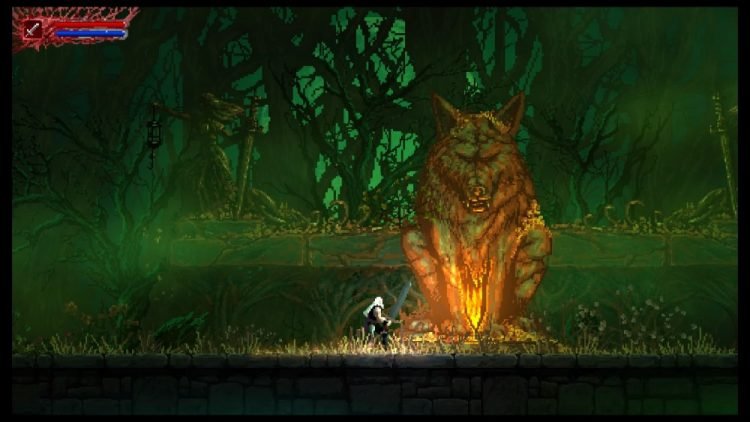If you’ve ever wondered what it would be like to play a game that took place inside the head of a Norwegian death metal band, then look no further than Slain: Back from Hell. I’m fairly sure no game could come closer; it’s bloody, it’s full of demons and it’s unnecessarily difficult. That’s all part of Slain’s charm, but it’s just too bad charm only gets you so far.
Title: Slain: Back From Hell
Platform: PC, PS4 (Reviewed), Vita, Xbox One, Wii U
Developer: Wolf Brew Games
Publisher: Digerati Distribution
Price: $14.99
*Review copy of Slain: Back from Hell was provided by the publisher.
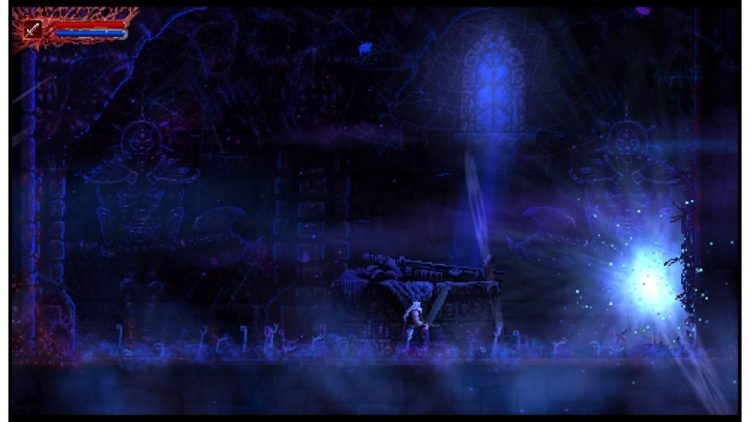
Embrace the Metal
Slain: Back from Hell starts off in an ancient tomb, where a “White-Whiskered Warrior” is being awoken by an ethereal spirit in order to stop Vroll from spreading evil across the lands. Vroll is basically a hulking vampire demon wielding two enormous swords, which are continuously dripping blood (In fact, every corner of this entire game is continuously dripping blood). The white-haired hero must battle his way across different areas, fight random enemies and bosses, dodge what I like to call Hell Whomps at every turn (they’re literally just like the Whomps from Mario, but deadly fast and maddeningly annoying. Oh, and covered in blood.) and make his way to Vroll’s Castle.
The whole game really embodies its metal theme in every aspect. Whether you’re fighting random “Skellywags” while jamming to the dark guitar score or actually headbanging to praise the “Metal Gods” after defeating a boss, you’ve no choice but to embrace the darkness here. It’s all really fitting somehow and helps make this game unique compared to its side-scrolling brethren.
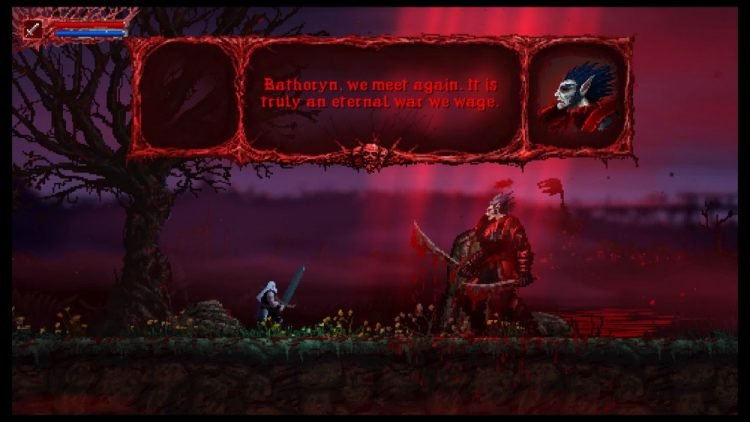
Dark, but Not Deep
At its heart, Slain: Back from Hell is a platformer. There’s a lot of jumping on moving stones, killing random baddies and progressing through linear levels. There’s even a hub-world of sorts, where you can access other locations, but that’s pretty much all it’s used for. No item shop, no upgrade shack, no gallery of random collectibles—just a small little place where you’ll arrive after every area is beaten, and then travel to the next.
One problem with this game, however, is that it really seems like it will be a Metroid Varia title early on. Maybe it’s just because it kind of feels like Castlevania, or maybe it’s just because nearly every indie retro side-scroller these days is a Metroidvania title, but whatever the reason, it just feels like it should be. Honestly, I think it would have benefitted from being such a game, because as it is, Slain: Back from Hell is a little shallow.
For one, there’s the aforementioned linear level design that offers only few chances to stray from the beaten path (and little reward for doing so). Now, I’m not saying that every title this generation needs to offer me a winding path to constantly backtrack through, opening previously closed-off areas and killing things I lacked the ability to kill before, but since moving linearly was pretty dull as far as exploration of the world goes, it would’ve been nice to see some depth. In that same respect, the way the hero fights is lacking some depth, too. I was expecting at least some acquisition of new moves, maybe even some new weapons or abilities, but you simply get none of that. What you do get are two simple upgrades to your sword: a fire ability and an ice ability. This, sadly, doesn’t really come into play in any meaningful ways (except for during the last battle, and then only minutely).
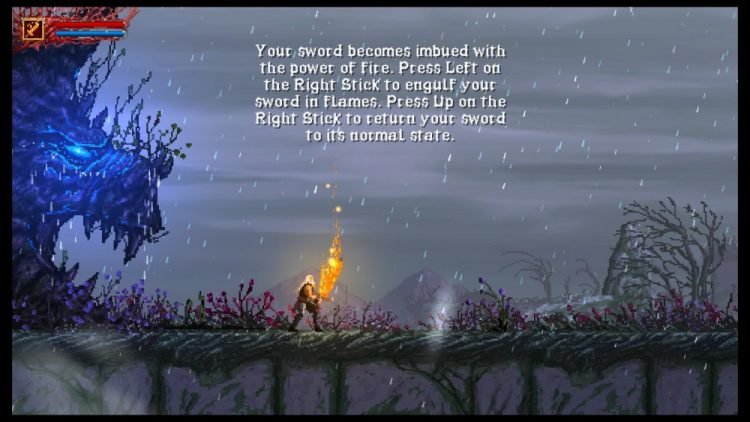
Metal + Retro… Metro?
Slain: Back from Hell’s biggest appeals are its art and style. The art is very Super Nintendo, reminding of one game in particular: Blackthorne. Blackthorne is a title that I didn’t play until Super Nintendo had gone the way of the Dodo, but it’s a really great game that clearly inspired later games like Abe’s Odyssey. There was a lot of 2-D puzzle solving, backtracking and basically a lot of appeal that Slain: Back from Hell is lacking. I didn’t judge it up against Blackthorne while playing it, because they are two entirely different games, but it’s hard not to notice what could have gone into Slain: Back from Hell to make it that much better.
Nonetheless, there is a certain charm in Slain: Back from Hell’s art direction, and also in the general story-building and dialogue. Upon reaching new levels, the hero is almost always greeted by a few NPCs, like the old, hag-like sorceress that serves as a guide throughout the various hellscapes. The hero is also confronted early on in each new area by the main boss of that area, who either wishes to intimidate the hero away, or taunt him further with promises of swift death. What I like about these conversations is the language that’s used, which is always very medieval and overly sincere, yet sprinkled with name calling and wordplay (I will forever refer to nameless skeleton-enemies as ‘Skellywags’). It was always a welcome interruption to the incessant blood, gore and grind.
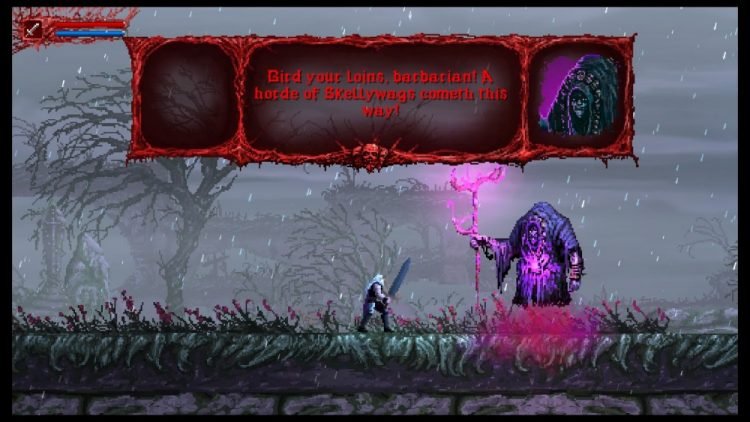
Hell Whomps
While there is definitely some good and bad in Slain: Back from Hell, where this title suffers most lies in its flawed mixture of ease and difficulty. Progression through levels is never so daunting that you can’t complete the task, but sometimes there are moments of serious frustration. Other times, getting to the next checkpoint—which are thankfully sprinkled throughout the levels heavy-handedly—is easy as pie. When you stop to consider what exact mechanics or features make the game difficult, it becomes obvious that there is a certain lack of consideration for what makes a game delightfully challenging versus simply annoying.
For instance, many of the enemies and bosses that you encounter, the things that should make for the bulk of challenge in the game, are fairly easy to overcome. With the exception of a couple in particular, like the Mother Beholder and the final encounter with Vroll, I was able to slay most of them on the first attempt. The same goes for random baddies. Sure, I died now and then, but rarely were the wandering lost souls of Vroll’s undead army too much to handle. Most of the difficulty, however, came from arbitrary things, like the Hell Whomps. As I mentioned earlier, these things were crushing-type structures that triggered when you walked under them, slamming down upon the hero for an instant kill. The thing is, they are super, super annoying. They come down so fast, and the only way to dodge them is to trigger the crushing mechanic, and then hit L1 to backslide out of the way. They become much easier to escape once you get the hang of it, but they are on such a hair-trigger that they will still take you down even after you’ve dealt with tons of them.
My main issue with these is that it seems to me that the developers wanted things to be harder, or maybe wanted reaching the next checkpoint to be harder, so instead of putting some effort into maybe some more creative and challenging level- or enemy design, they just put more Hell Whomps in there. Sometimes you’d play an area 10 times, dying only from these Hell Whomps and never from the actual combat, which seems backward to me. While I welcome the idea of ruthless challenge (hey, I’m a Souls fan), this was more annoying than challenging, and that’s not good design. I liked the idea that each tiny section between checkpoints had the potential to become its own mini-challenge. While I think that this game is pretty difficult at times, and while some might try to cry out “Souls-like,” I don’t think that’s what Slain: Back from Hell is, because the small moments of extreme challenge were always more annoyingly frustrating than rewardingly challenging.
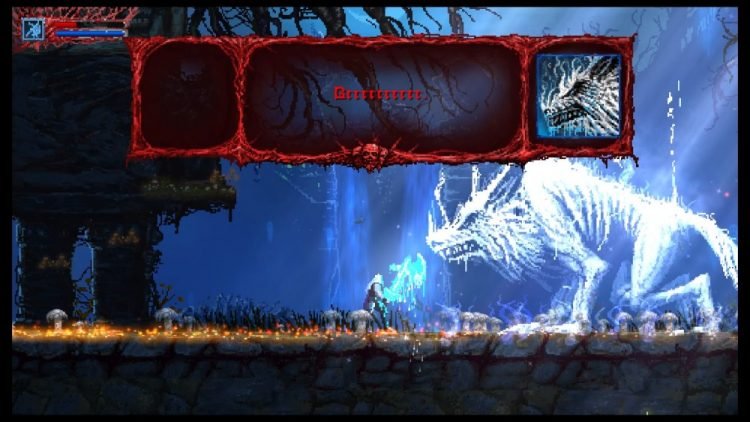
Summary
In my honest opinion, I would say you could pass on Slain: Back from Hell—it simply isn’t a must-play. If you happen to have the extra cash, and are looking for something mildly enjoyable, then you could definitely do far worse—there are moments of pure, sidescrolling fun in this game and the art and style add to the appeal—but I wouldn’t go out of my way here. The best thing that can come from throwing some cash at this game is that the developers might be encouraged to make another game, and next time, make one with a little more depth and reward. Assuming you’re like me, with limited financial resources, and you’ve got your eye on another game, then, by all means, get that other game.
Pros:
- Cool art direction
- Interesting twist-ending
- Challenging at times
Cons:
- Not enough substance
- Inconsistent difficulty
- Uninventive level design
-
A little metal goes a long way, but depth and creativity go further.


